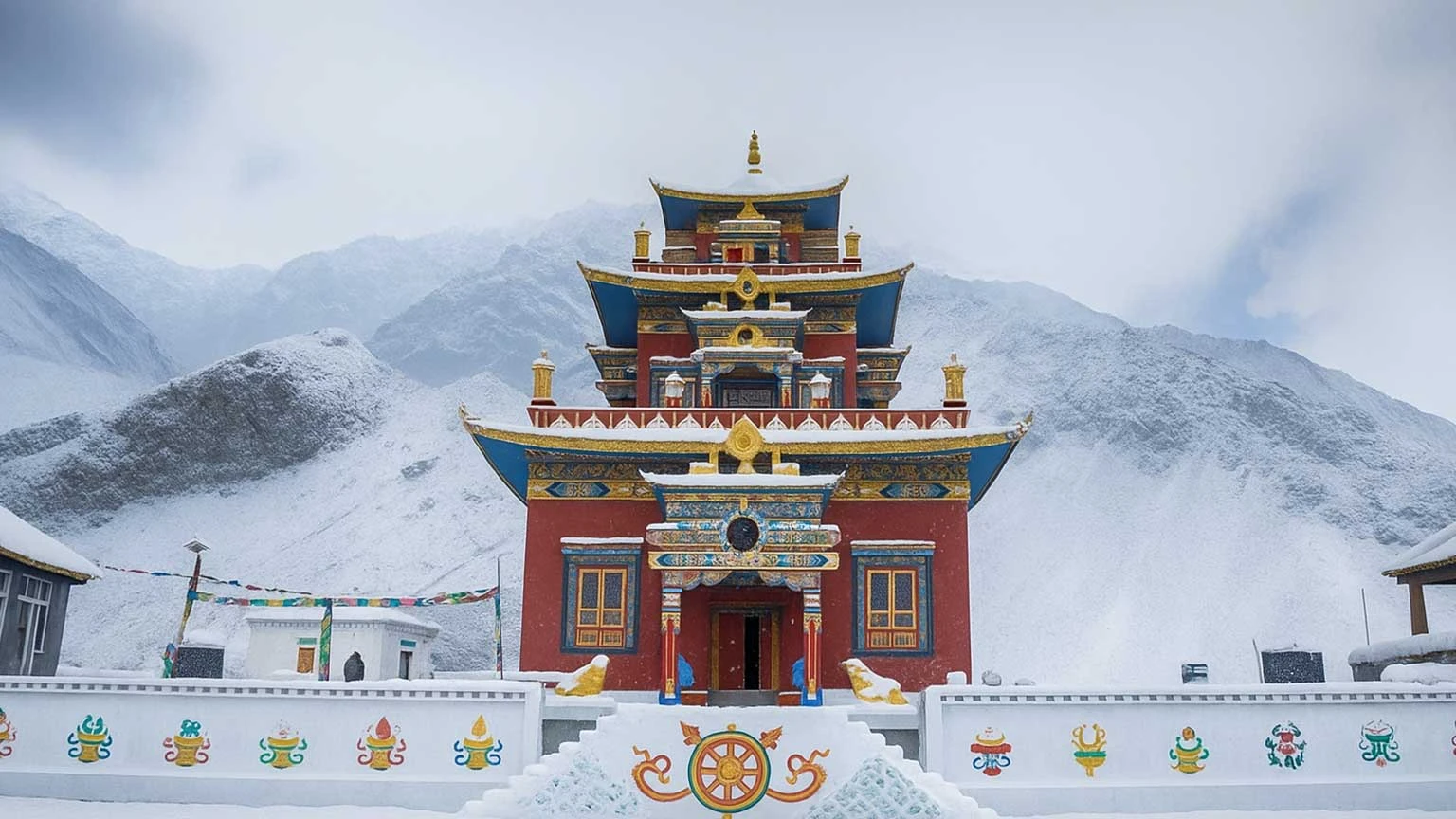
Gue Monastery, located in Gue Village at 10,499 ft (3,200 m), is one of the most fascinating places in Spiti Valley. What makes it unique is the 600-year-old naturally preserved mummy of a Buddhist monk, believed to be that of Sangha Tenzin, a Lama from the Gelugpa sect.
The mummy, discovered by the Indo-Tibetan Border Police in 1975, remains intact without any chemicals, with teeth, nails, and hair still visible. It sits in a glass case inside the monastery, drawing pilgrims, monks, and curious travellers alike.
May – October: Best time when roads are open and the monastery is accessible.
July – September: Pleasant weather, perfect for village visits.
November – March: Harsh winter; roads may be closed due to snow.
To witness the only naturally preserved Buddhist mummy in India.
To explore a remote village near the Indo-Tibetan border.
To learn about ancient Buddhist meditation and preservation practices.
To enjoy peaceful Himalayan landscapes far from crowds.
See the Mummy – The centrepiece attraction, preserved in glass.
Explore the Monastery – Observe murals, thangkas, and Buddhist architecture.
Meditation & Prayer – Spend quiet moments in the spiritual atmosphere.
Photography – Stunning landscapes around the village.
Tabo Monastery (40 km) – One of the oldest functioning Buddhist monasteries in India.
Dhankar Monastery (55 km) – Perched dramatically on a cliff.
Nako Village (40 km) – Serene lake and ancient monastery.
Kaza (80 km) – Spiti’s main town for stays and facilities.
From Tabo (40 km, 1.5 hrs) – By taxi or bike, en route to Nako.
From Kaza (80 km, 3 hrs) – Drive via Tabo.
From Shimla (390 km, 2–3 days) – Via Kinnaur Valley.
From Manali (280 km, 2 days) – Via Kunzum Pass (open May–Oct).
Food – Only basic meals available in the village; better options in Tabo.
Stay – Limited homestays in Gue; most travellers stay in Tabo or Kaza.
Shops & ATMs – None; nearest at Tabo and Kaza.
Network – Very weak; BSNL works occasionally.
Combine Gue with a Tabo–Nako–Dhankar circuit for a day trip.
Carry snacks and water – facilities are minimal.
Cash only – no ATMs or digital payments in the area.
Wear comfortable shoes – short walks are required to reach the monastery.
Visit in daylight hours; the area is very remote.
Respect the mummy – no loud noise or disrespectful behaviour.
No flash photography inside the monastery.
Support locals – buy tea or handicrafts from villagers.
Do not litter – carry your waste back.
Be mindful – Gue is a border village; follow security protocols.